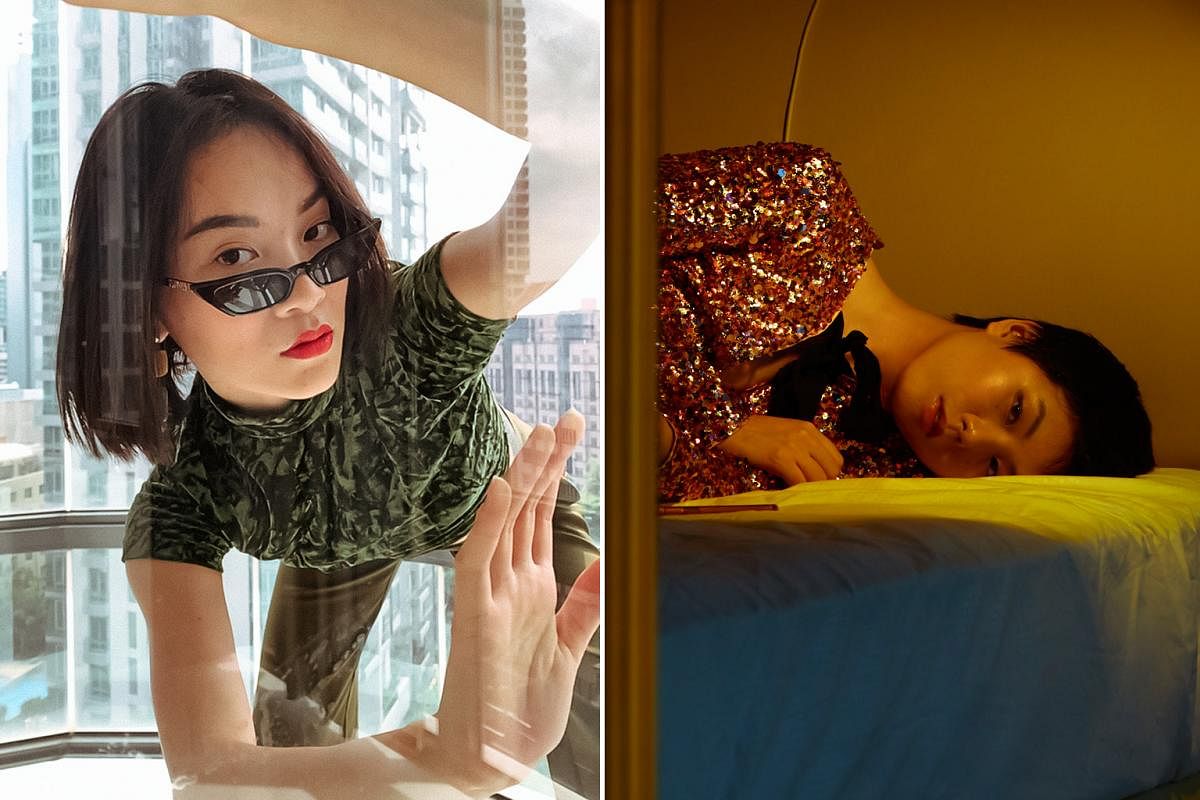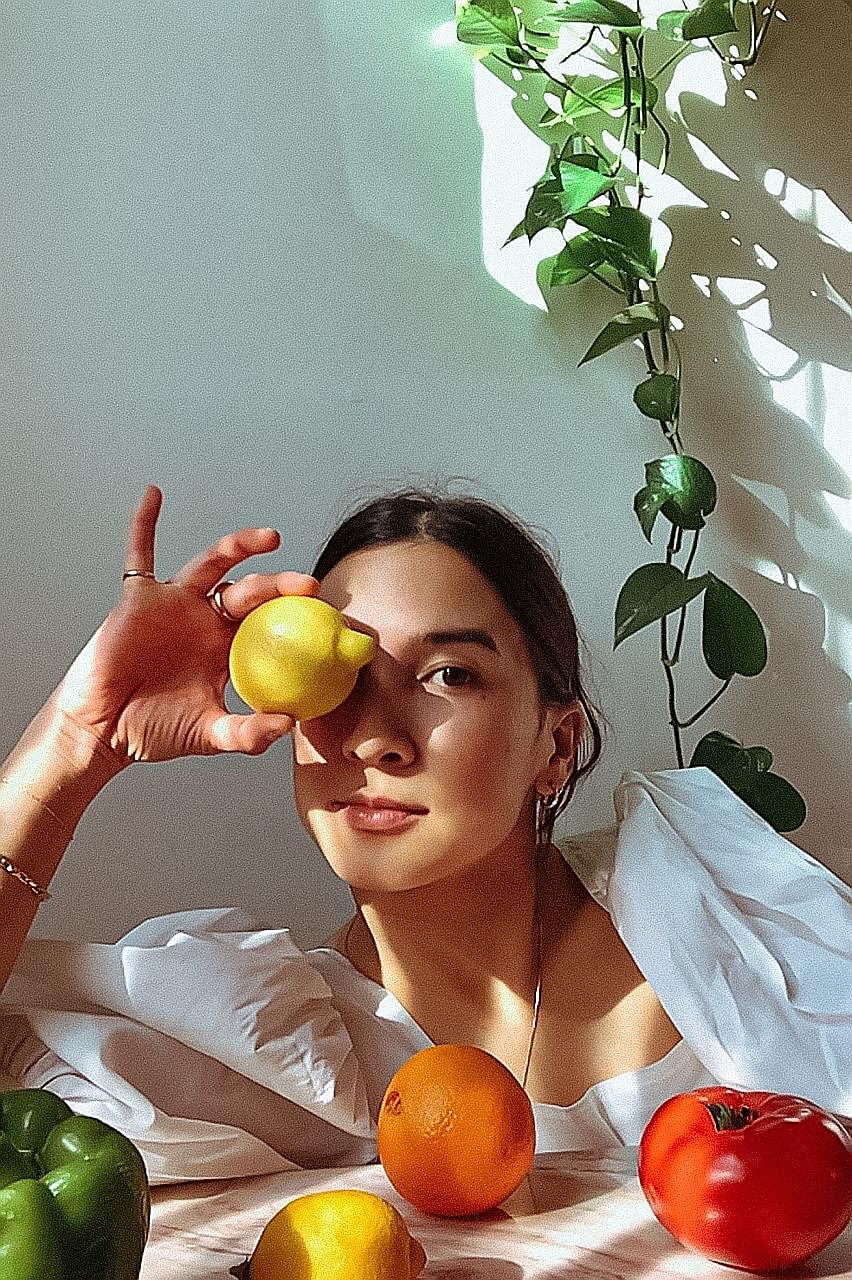Taking photos by proxy
Stuck at home, photographers such as Singaporean Lenne Chai are doing photo shoots remotely on their phones via FaceTime

It seems only fitting that an interview with a budding FaceTime photographer be conducted over a video call.
Through a low-resolution square on screen, local fashion photographer Lenne Chai, 29, remarks for the third time how poor the quality of FaceTime is.
"The FaceTime camera is a potato - I cannot stress this enough," she deadpans.
That has not affected the outcome of her pictures though. On her Instagram page (@lenneigh) are dreamy portraits of friends in their homes - visuals the untrained eye would never guess are snapped from the video-calling app by Apple.
She started toying with the idea of remotely photographing friends and family late last month, after noting a rising trend of international photographers shooting via FaceTime calls.
For its April issue, fashion magazine Vogue Italia's cover girl, American model Bella Hadid, was shot and directed entirely in her home via FaceTime by photographer Brianna Capozzi.
The phone itself is the camera, which the photographer can control via a built-in camera function on the app that allows you to take photos during the call.
Particularly striking to Ms Chai were the editorial images from Italian photographer Alessio Albi.
"Initially, I didn't want to touch the medium because I felt I couldn't do it better than he did," she says of Albi, whom she credits as an early pioneer of the trend. "But almost every other fashion photographer I follow has tried it."
She contacted 30 close friends living here and in other cities like New York to gauge their interest.
The quirky series she titled People I Miss has been a meaningful way for her to connect with loved ones during the circuit breaker.

For each FaceTime shoot, she first draws up a mood board inspired by the subject to determine the overall direction. They discuss outfits and the best lighting times and spots in the subject's home, before fixing a time to call.
A shoot can take anywhere from one to three hours.
During the call, she guides the subject on where to place and angle the phone: pan to the right, raise it higher, tilt it down. When she likes what she sees, she triggers the "shutter" on her end.
"It's really not that different from a real shoot, just that the bulk of the work now falls on the subject," says the Ngee Ann Polytechnic mass communication major.
For that reason, a FaceTime shoot is "infinitely more challenging and exhausting", she points out, though it has helped that some of her friends in the series are influencers and used to doing their own make-up and understand lighting and camera angles.
Ms Chai, who does mainly magazine work and has shot A-list celebrities such as actor Dylan Sprouse for local and international titles, was based in New York for the last 11/2 years.
With the escalating coronavirus situation, she flew home in mid-March. She was also rattled by an uncomfortable sight in the United States - she saw a queue to enter a gun store when she was on set for celebrity shoots in Los Angeles.
"That was a huge wake-up call," she says. "I just figured it was wiser to be home."
NEW AVENUE FOR REVENUE
Though it started as a "wholesome" personal project to kill time, her photos have since helped her book a few paid gigs.
A local fashion brand, a global media production company and a US-based publication got in touch to commission FaceTime shoots. These are her first paid jobs since coming home.
The bachelorette had initially intended to spend the time at home as downtime with her family. "I'm very lucky that this got commercialised so quickly," says Ms Chai, who intends to continue the series of shoots with her friends.
It could be a new pillar of photography - one way forward for the industry in a socially distanced future, she notes.
Around the world, photo shoots for magazines and commercial campaigns alike are on hold.
Where a typical photo shoot might require a production team of up to 10 on set, a FaceTime shoot can happen with just the model and photographer.
At a recent commercial shoot, Ms Chai conducted the FaceTime call concurrently with a Zoom video call with the client and a stylist. The stylist art-directed the model remotely.
"There are clients who are desperate to get any kind of content out," she says. "If you can do FaceTime photography, that's a new avenue for revenue."
But she believes FaceTime photography is "very much a stop-gap measure".
Picture quality does not compare and the extra effort on each end is unsustainable in the long term. With the back-and-forth over video call, her commercial shoot took five hours to complete.
The pandemic has also exposed the flaws in an industry that still struggles to be financially viable, she says. Photographers are out of work and many, as freelancers, lack job stability.
Ms Chai anticipates the global fashion photography industry to shrink after the pandemic. "There won't be as many jobs to go around. People are still consuming, but I think there's definitely less desire for the 1 per cent kind of lifestyle."
There is a need to relook how much photographers are paid - especially in Singapore, where being a creative is "shaky and not as legitimised" as what she experienced in the US.
She also pulled together a "book club" of local photographers who discuss the medium and how to push for more stability and rights for local creatives.
They recently piloted an anonymous survey, with a focus on pay transparency, to uncover gaps in the industry. They also hope to create an educational resource to guide young photographers in Singapore.
"Considering the pandemic - and how there's no work for us to do - this is really the best time to reform," Ms Chai says.
"Maybe this period will force people to look into ways of remote photography that isn't FaceTime - like a more sustainable, professional way."
Photographer Lenne Chai's tips on doing a FaceTime photo shoot
1. Pick a clean and minimal background: Fabric or a white wall will be easier to work with because it already looks like a typical fashion photograph or editorial image. "The challenge of this medium is that you are working with what you have."
2. Close-up shots work better than wide ones: "It hides a lot of flaws in the medium of FaceTime," says Ms Chai.
3. Communicate exactly what you want: "Go into the shoot with an idea of what you want to achieve. You can't be shy about telling people what you want."
4. A phone tripod is your subject's best friend: "The difference between shooting someone who has a phone tripod and someone who doesn't can be literally two hours to get the same effect. It will save you a lot of time on trying to rig up something to shoot."
5. Lighting is everything: Time your shoot around the best lighting time in your subject's home and experiment with artificial lighting like lamps where needed.
Join ST's Telegram channel and get the latest breaking news delivered to you.
A version of this article appeared in the print edition of The Straits Times on May 22, 2020, with the headline Taking photos by proxy. Subscribe

